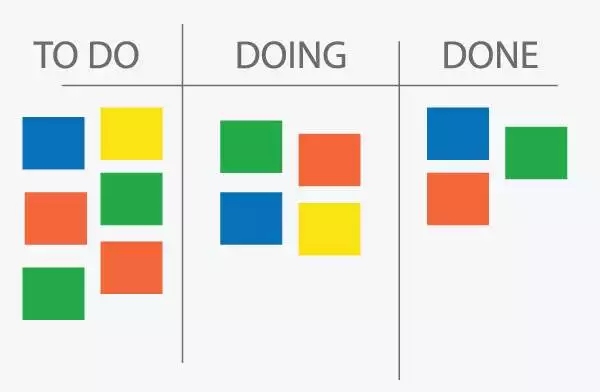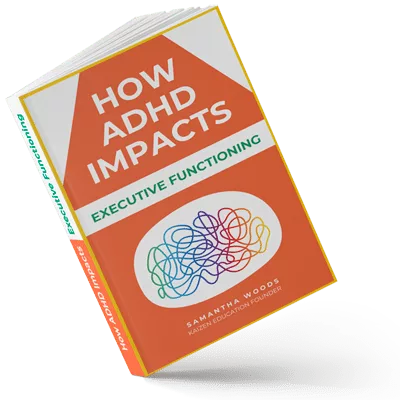‘Out of sight, out of mind’ is the number one rule when it comes to memory and ADHD.
IN SIGHT = IN MIND
That’s why the simple whiteboard is a life-saver for students with ADHD. Even better, a magnetic whiteboard with fun magnets and multi-coloured erasable markers! Having a well-sized whiteboard in your child’s bedroom or other central location where they will bump into it several times a day can be life-changing.

Still not convinced? Here is a list of reasons to go get a whiteboard today!
1. Organization and Time Management Support
“I forgot!” I don’t know.” “I studied for hours but still bombed the test!” Sound familiar? I get it. It’s frustrating watching your child study for hours lying on their bed reading over their notes on their laptop the night before a test or frantically scrolling through their phone for their soccer schedule.
The fact is, the digital landscape can lead to information overload. The digital tools that are supposed to make things easier to remember leave students floundering and wondering why THEY aren’t able to remember important information.
Whiteboards make information visual and always accessible. No scrolling or searching required! Encourage your child to create to-do lists, plan study schedules, and visualize upcoming tasks on the whiteboard.
2. Visual Engagement for Improved Focus and Memory
It’s no secret that visual aids captivate attention and enhance learning. Concepts can come to life through diagrams, drawings, and mindmaps on a whiteboard. These visuals, created by the student, help break abstract concepts into tangible, memorable components, supporting recall during exams.
Is there a concept your child continues to struggle with despite studying? Leave their visual diagram beside their to-do list! It’s like a mini-study session multiple times a day.
3. Hands-On Learning and Kinesthetic Engagement
Whiteboards provide a hands-on platform that necessitates physical engagement. Your child can stand, draw, erase, move magnets and sticky notes, and create. This turns tasks like studying or time management into a physical, interactive experience. Movement helps children and teens focus and enhances their ability to grasp and retain information.
Plus, there is something so satisfying about writing on a whiteboard or moving a magnet around. For students with ADHD, the immediate engagement can be incredibly rewarding, keeping them interested throughout the process.
4. Flexibility and Adaptability
Children need different support at different times in their lives. Elementary school students and high schoolers have different abilities and schedules. Whiteboards offer flexibility to meet your child’s needs. This customizable experience ensures that this method remains engaging and relevant.
Your child can grow with their whiteboard. Using a whiteboard becomes a routine they don’t have to abandon at a certain age. This is SO important. Routines are the backbone of making a technique work. My son still uses his, and he’s 23 years old.
How to Use a Whiteboard at Home
First, you have to choose the right whiteboard. Avoid the flimsy little dollar store ones and invest in a big ol’ one – even classroom size. Or maybe just a 6X4 one (I get it, you aren’t going for the classroom-chic aesthetic in your home. Just remember, the bigger the better!) Your child will use this for years to come.
Make sure the whiteboard is magnetic. Bring your child to the store and have them choose their own funky coloured dry-erase markers, small brightly coloured magnets (the ones that you can write on), and magnetic clips. Make the experience exciting and inviting.
Set up the whiteboard in their bedroom or central location. Don’t tuck it away in the basement to forget it in a week. Colour code the board with ‘Reminders’, ‘To Do’s’, ‘Checklists’, and ‘Creative Ideas and Doodles’.
Draw a DO and DONE T chart on the board and write the task steps on each magnet (for example, make your bed). When your child completes a DO step, they can move the magnet to the DONE column.
Don’t forget to celebrate and reward when all the DOs are DONEs!
By embracing the power of the whiteboard, you’re providing your middle school or high school-aged child with a tool that aligns with their learning style and equips them with skills they will need throughout their academic and personal journeys. Remember, it’s all about recognizing and nurturing their unique strengths, and whiteboards are here to do just that.

